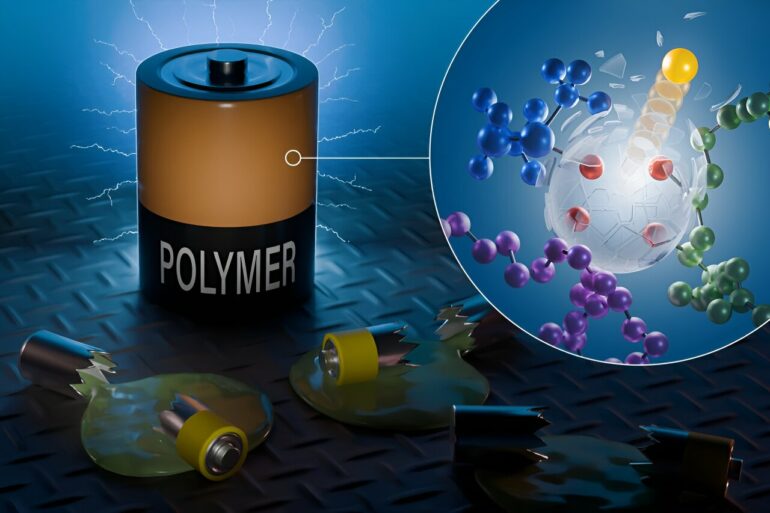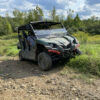An international team of scientists has found a way to improve battery design that could produce safer, more powerful lithium batteries.
The team used quasi-elastic neutron scattering at Oak Ridge National Laboratory to set the first benchmark, one-nanosecond—or one billionth of a second—for a mixture of lithium salt and an organic polymer electrolyte.
The work is published in the journal Nature Materials.
“It all comes down to the study of materials,” said Eugene Mamontov, ORNL Chemical Spectroscopy group leader. “And polymer electrolytes won’t catch fire the way liquid electrolytes do in lithium batteries.”
The team used the neutron technique to validate computer simulations, ending a long-standing debate about how long it takes lithium ions to break free from tiny cages created by polymer electrolytes. The rate at which ions in any battery break free from such environments, or solvation cages in polymer electrolytes, helps determine how energy flows through the battery. Polymer electrolytes could enable more energy-dense electrodes, like lithium metal, resulting in more powerful lithium batteries.
The findings also open doors for rapidly screening new battery materials at ORNL. “Neutrons are highly sensitive to hydrogen, which is present in virtually all electrolytes. This allowed us to see how it moved in the system and understand polymer electrolyte dynamics at an unprecedented level of detail. We couldn’t have pinned down the time and length any other way,” said Naresh Osti, ORNL neutron scattering scientist.
“Naresh and Eugene’s interpretation of neutron data from the experiment at ORNL opened our eyes to understanding the extent to which lithium ions are caged in polymer electrolytes. Our findings suggest this general approach will apply to liquid electrolytes,” said Nitash Balsara, Charles W. Tobias Professor of Electrochemistry at the University of California, Berkeley.
More information:
Neel J. Shah et al, Nanosecond solvation dynamics in a polymer electrolyte for lithium batteries, Nature Materials (2024). DOI: 10.1038/s41563-024-01834-y
Provided by
Oak Ridge National Laboratory
Citation:
Neutron scattering study points the way to more powerful lithium batteries (2024, April 16)



